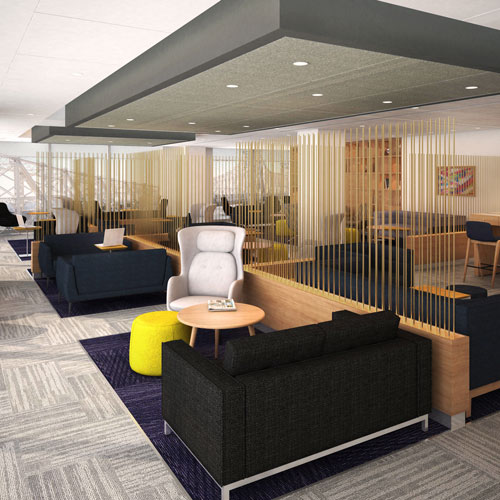
Chattanooga, Tennessee-based CBL & Associates Properties, Inc. is one of the largest mall real estate investment trusts (REIT) in the United States, with 148 properties in its owned and managed portfolio, including 89 regional malls. Recently, it has turned its attention to fine-tuning older, enclosed shopping malls for the current generation of consumers. One strategy has been to consolidate small-shop spaces into midsize suites; another has been to break up anchor spaces into a midsize suite and several small-shop spaces. Either way, midsize box stores are proving to be the secret to success, and H&M, the fashionable clothing retailer, has become CBL’s ace-in-the-hole tenant.
“We’re working with malls generating between $250 and $350 per square foot in sales,” says Jon Meshel, CBL’s vice president of development, of the sites that are receiving the makeover. “These are malls that were generally built in the ’70s and ’80s and ’90s, when there was more space allocated to small-shop tenants than may be necessary today. This creates valuable opportunities for us to add a larger-format retailer that is in high-demand by consumers while also reducing the amount of small-shop space.”
CBL’s recent work reflects a larger national trend at midtier malls: the replacement of low-performing retailers in the 2,000- to 5,000-square-foot category with a “junior box”—“the TJ Maxxes and the Ross Dress for Lesses of the world,” Meshel says. In the past, junior-box stores typically sought out power-center formats and other open-air shopping centers, but recently, in some markets, they have decided that larger, enclosed malls are a good format for them. Meshel lists some of the other tenants of that nature that CBL has been doing business with of late, including Dick’s Sporting Goods, Ulta, and Gordmans. “That’s a departure from the way those companies were looking at malls five or 10 years ago.”
While those names are certainly present in the CBL portfolio, none of them seems to be as hot as H&M. CBL set up 10 H&M stores in 2014, had 10 more in the works in 2015, and expects the rate of openings to continue through 2016. “They have been incredibly strong for us, and I would go as far as calling H&M an iconic brand,” Meshel says. “If you go to New York City, H&M is on a ton of street corners, and it almost feels like H&M NYC. If you can bring them to some of these smaller markets, it has a big impact on the malls.”
CBL treats H&M less like a junior box and more like a miniature department store in terms of customizing the space to meet the retailer’s unique needs. The locations are smaller than others from a square footage standpoint but are quite sophisticated in the shopping experience they want to offer. Retrofits are required, with costs per project depending on the existing conditions. First, three to five smaller spaces are consolidated, which means knocking out walls and combining utility feeds. Ceiling heights are raised, new lighting schemes go in, and H&M’s custom floor configuration is laid out. A big focus is on the entryways, “reconfiguring the internal portion of the store in the mall corridor to create a single, larger store format,” Meshel says.

The H&M remodels are fast-tracked in a 10- to 12-week schedule, but it often takes several months to move the smaller tenants and complete the assemblage of the necessary square footage before construction begins. Now that the transformation has been replicated more than a dozen times, Meshel has streamlined the process of design and construction together with his counterparts at H&M into a reliable and replicable “kit of parts,” allowing him to move quickly on to the next site. “I would describe them as big microprojects,” he says. ”It’s very different from working on long-term development projects, but these are relatively time-intensive and complicated redevelopment projects.”
CBL has focused its H&M upgrades in malls in small- to medium-size cities across the Southeast, Mid-Atlantic, Midwest, and Texas so far—places such as Daytona Beach, Florida; Fayetteville, North Carolina; and Louisville, Kentucky. The new image that H&M has provided to CBL’s midmarket malls in these regions has translated to a bump in value for the malls as a whole—the irrefutable sign of a strong anchor tenant. “We’ve been extremely pleased across the portfolio with the sales upticks we’ve seen where we’ve added H&M,” Meshel says.
On a related note, the company is also reconfiguring a number of malls where larger anchor stores such as JCPenney and Sears have closed down. In these cases, CBL is taking a similar approach, breaking up the footprint of the giant department stores into a combination of junior boxes and higher-end small-suite establishments for brands such as the Cheesecake Factory, New Balance, Oakley, and American Girl. Both trends seem to point in the same direction—flexible shopping mall configurations and strong junior-box tenants are a combination that bodes well for the future of the American shopping mall.


